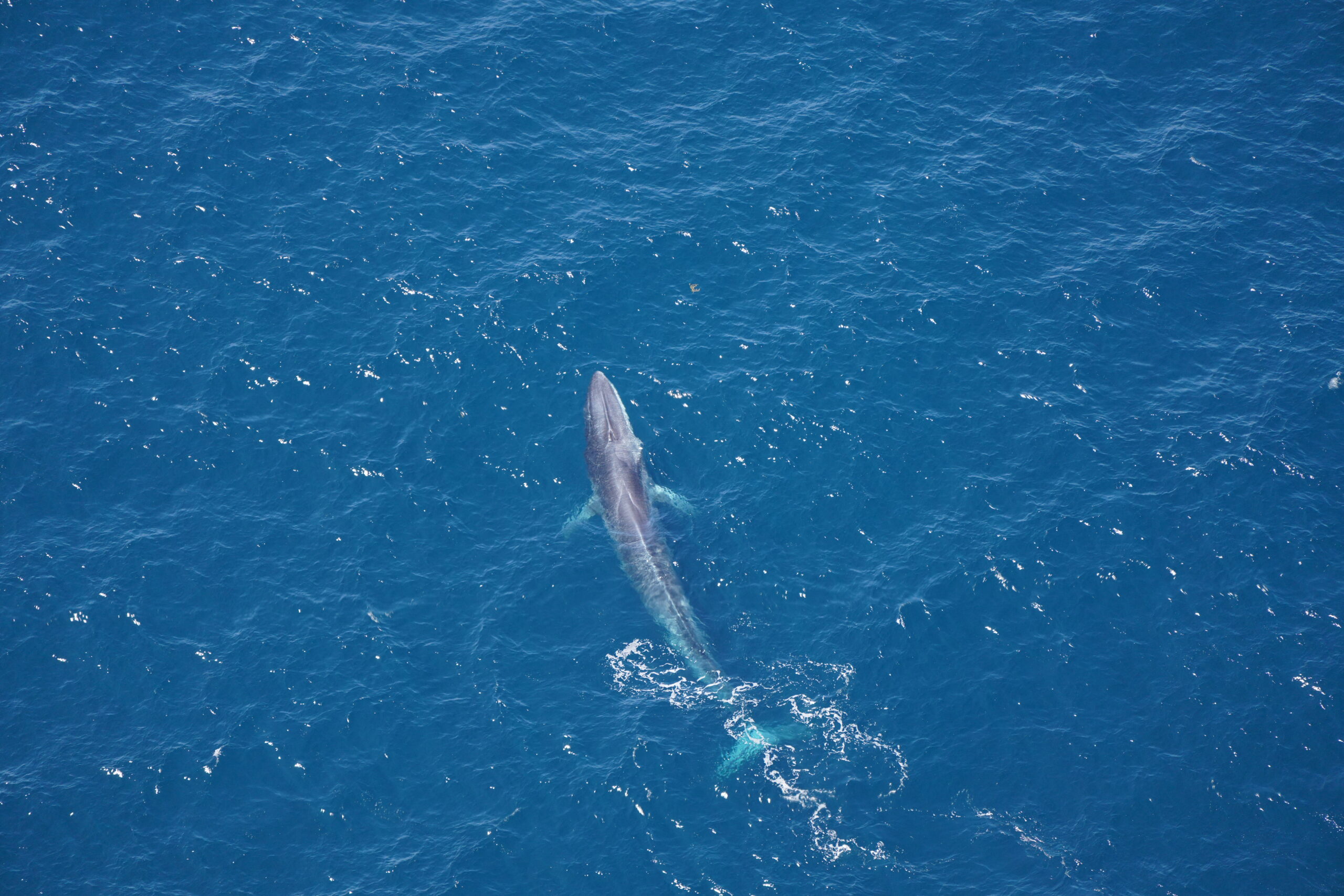
BOSTON, MASS. (Aug. 10, 2023) – Scientists with the New England Aquarium documented more than 700 ocean animals during a recent aerial survey over Northeast Canyons and Seamounts Marine National Monument, the only marine national monument in the U.S. Atlantic Ocean.
*PHOTOS AVAILABLE HERE WITH CREDIT TO NEW ENGLAND AQUARIUM*
The scientists flew above the biodiversity hotspot 150 miles off the coast of Cape Cod on August 3, capturing photos of fin whales and pilot whales along with bottlenose, striped, and Risso’s dolphins.
“The Aquarium has been documenting the marine mammal biodiversity in the Monument for seven years, and every aerial survey flight is breathtaking,” said Orla O’Brien, an associate scientist in the Aquarium’s Anderson Cabot Center for Ocean Life. “Our photos only scratch the surface of the ocean life that calls this area home.”
The aerial survey observers also sighted Chilean devil rays, manta rays, common dolphins, sunfish, and a hammerhead shark. Many other animals live below the surface, where dozens of species of coral create deep-sea ecosystems.
The Monument features three underwater canyons deeper than the Grand Canyon and four seamounts, or extinct volcanoes, that rise higher than any mountain east of the Rockies. In 2016, President Obama designated the 5,000-square-mile area the first marine national monument in the U.S. Atlantic Ocean. The New England Aquarium and Mystic Aquarium played a crucial role in the designation of the Monument, providing the strong scientific evidence of the importance of this diverse habitat that offers food and shelter to many endangered and threatened marine species.
This month’s aerial survey comes as President Biden announced plans for a new national monument to preserve more than 1,500 square acres just outside Grand Canyon National Park. The announcement marks the president’s fifth monument designation, furthering a commitment to protecting areas of historic and scientific importance for future generations.
Scientists have called for 30 percent of the planet’s land, waters, and ocean to be protected by the year 2030 to stem biodiversity loss and build resilience against climate change. This global movement, called 30×30, was adopted as a national goal called America the Beautiful. The campaign aims to protect biodiversity, foster climate mitigation and resilience, and ensure more equitable access to nature. Read more about 30×30 and America the Beautiful here.
MEDIA CONTACT: Pam Bechtold Snyder, psnyder@neaq.org; 617-686-5068
